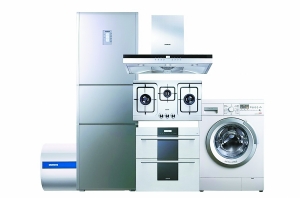Difficult to change the pattern of foreign household appliances production transfer
Shareconn supplies different kinds of adapters,such as audio&video Adapter,HDMI adapter,RF adapter and so on. We stick to the principle of "quality first, service first, continuous improvement and innovation to satisfy the customers" for the management and "zero defect, zero complaints" as the quality objective. To perfect our service, we provide the products with good quality and reasonable price. Adapter Connectors,Stereo Audio Adapter,Multimode Adapter Connectors ,VGA to DVI Adapter Shareconn Development CO.,LTD , http://www.share-conn.com LG Electronics recently stated that it plans to invest US$300 million in Hai Phong, Vietnam, to build a 400,000-square-meter production plant. Construction is expected to begin in the second half of next year and construction will be completed by 2020. The plant will be mainly used for white-electricity production such as refrigerators, washing machines, and air conditioners.
LG Electronics recently stated that it plans to invest US$300 million in Hai Phong, Vietnam, to build a 400,000-square-meter production plant. Construction is expected to begin in the second half of next year and construction will be completed by 2020. The plant will be mainly used for white-electricity production such as refrigerators, washing machines, and air conditioners.
Nearly the same time, Panasonic Group announced that it will start production of vacuum insulation material at its factory in Thailand in March this year. The purpose is to promote vacuum insulation materials with good insulation properties in the global market through energy conservation. Taking advantage of the insulation materials used in refrigerators, it is also possible to promote the expansion of components with high added value in the overseas market, while consolidating the leading position in the white electricity market.
In fact, in recent years, there are many well-known home appliance foreign brands that have invested and built factories in Southeast Asia. In March 2012, Sharp announced an investment of 10.7 billion yen in Indonesia to build a new factory for the production of refrigerators and washing machines. Sony earlier invested $99 million in a lithium battery manufacturing facility in Singapore.
For these measures of foreign household appliances enterprises, industry experts analyzed that the reason is the globalization of the company's layout and the future of the market in Southeast Asia. With the gradual development of the economy in Southeast Asia, the market is slowly growing and will be a huge home appliance market in the future.
With the development of China's economy, labor, land, and other costs have gradually increased. China's demographic dividend has subsided as one of the reasons for foreign-invested household appliance companies investing in Southeast Asia. Zhao Huizhi, a researcher in the home appliance industry of China Investment Advisors, believes that with the acceleration of urbanization, the cost of labor and rental will continue to rise. In contrast, Southeast Asia now has more advantages in this area, which has prompted the home appliance industry to gradually shift to these areas.
In addition, the Southeast Asian region took advantage of the international relations situation, throwing an olive branch to foreign home appliance companies also promoted the industrial transfer of some enterprises. It is understood that during the outstanding period of the Diaoyu Islands issue last year, Southeast Asian regions including the Philippines, Myanmar, and Thailand have shown goodwill to many home appliance companies that have already entered China, saying that they will provide preferential tax policies, investment environment, and excellent talents.
However, compared with the above factors, the real reason for foreign brands to invest in Southeast Asia is probably the future of the local market. In an interview with an interviewer, an unnamed foreign executive said that the key to corporate investment is not the cost but the reward. For home appliance companies, the key to their return depends on the size of the local market. Home appliance industry observer Hong Shibin also believes that the investment of home appliance companies tends to pay more attention to the advantages of the local industrial chain and market advantages.
The fact that the world's factories are temporarily difficult to change shows that in the past few decades, the manufacturing industry has completed a major industry shift, that is, the shift from advanced economies to China's coastal areas. The reason for this shift is that China has low labor costs and a huge market.
It is worth noting that despite the rising labor costs in the coastal areas, the demographic dividend in the inland areas of China still exists. Especially in Henan and Guangxi, where the birth rate was high in the 1980s and 1990s, the labor costs are still lower than those in Thailand and the Philippines. Last year, Samsung invested USD 30 billion to build a factory in Xi'an, and later joined hands with Corning to spend 600 million U.S. dollars to build a factory in Wuxi. This also shows that foreign investment in home appliance companies is shifting to inland areas.
According to Hong Shibin, in the next 3-5 years, the role of the Chinese factory in the world will not change. Because regardless of the integrity of the home appliance industry chain, the construction of a logistics system or a huge market, it is difficult for Southeast Asian countries to compare with China. However, it is undeniable that in the more distant future, the shift of manufacturing industries to Southeast Asia will become a trend. This is like a baton. In the past decades, China has taken over manufacturing from developed countries such as Europe and the United States. In the future, Southeast Asia and other underdeveloped countries will surely complete the replacement of manufacturing again.